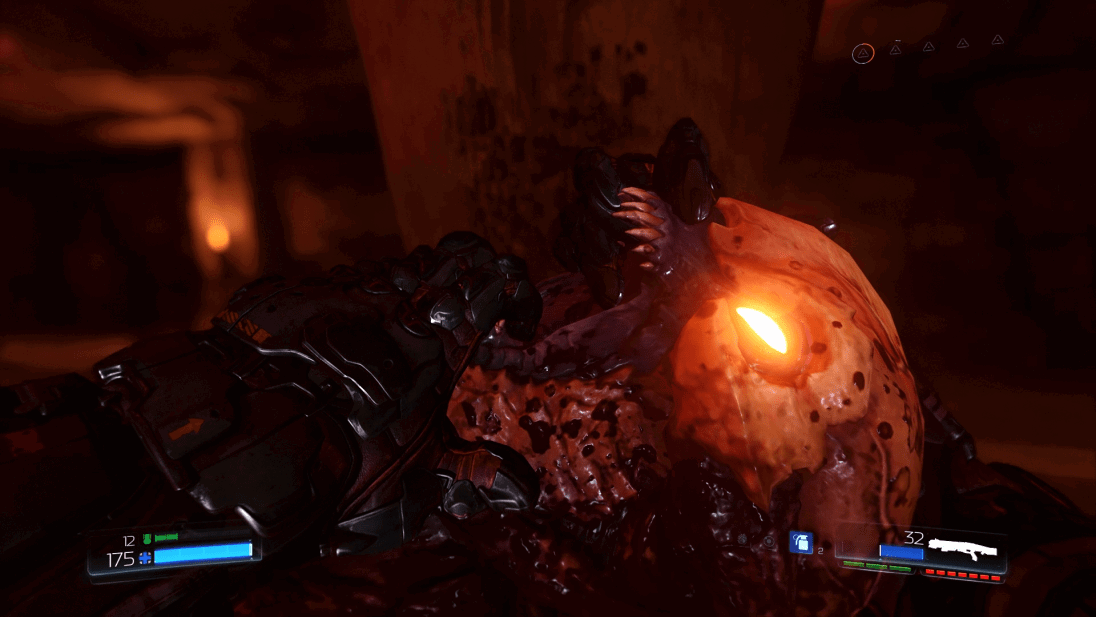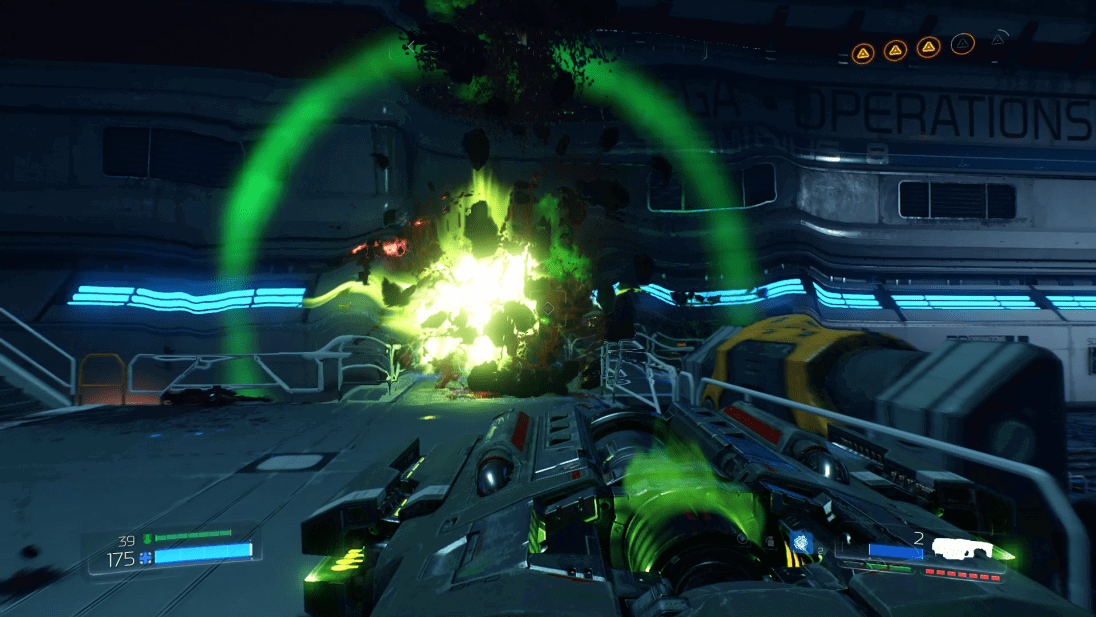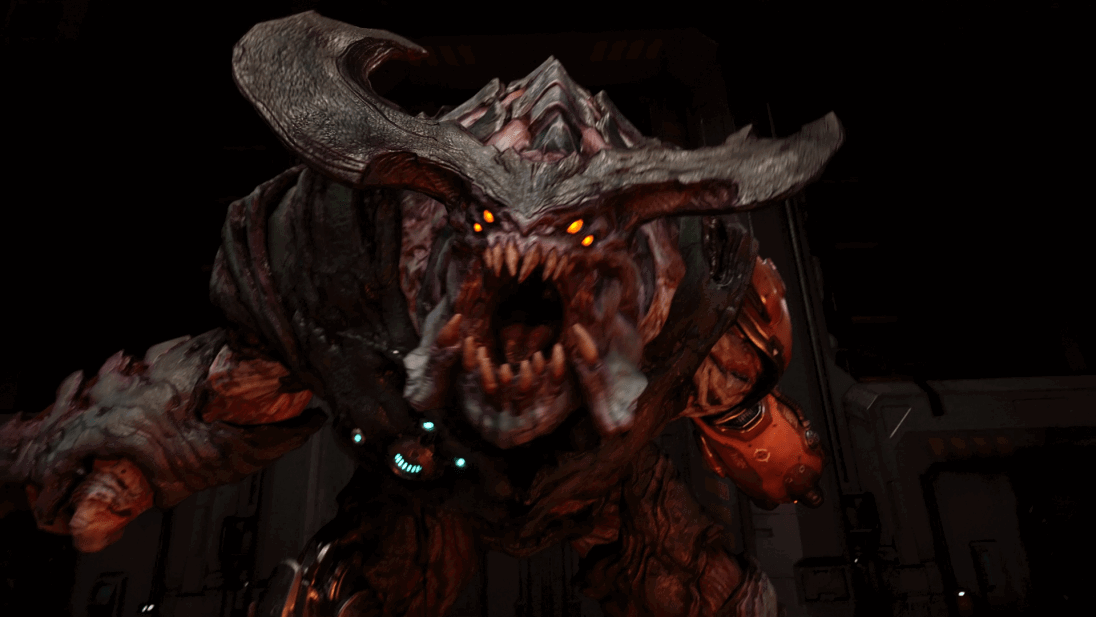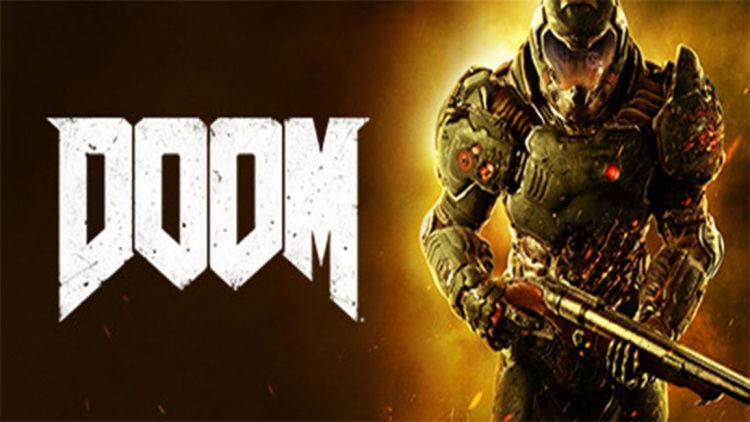History has shown that nostalgia sells. From Killer Instinct to Wolfenstein, classic series have been revamped; not just with shiny new graphics, but with a genuine love for the spirit of the original games and indeed games in general.
Now, DOOM, the premiere title in demon-slaying shooters, is up to bat. Will this be a glorious return to form for Id? Or will this new entry fail to live up to the precedent set by Wolfenstein: The New Order?
Game Name: DOOM
Platform(s): PC, Xbox One, PS4
Publisher(s): Bethesda
Developer(s): Id Software, Certain Affinity
Release Date: 5/13/2016
Price: $59.99
If you have any experience with the DOOM series, you more or less know what to expect: Demons taking over a Mars-based facility with some of the game taking place in Hell itself. To be honest, I thought this story formula would be all that transferred over in tact, but surprisingly, DOOM has no small sense of tradition. To begin: health doesn’t regenerate at all; unlike in the more recent Wolfenstein games, there is not even a top off mechanic that regenerates health to a certain point, nor the regenerating armor of games like Halo or Borderlands. Rather, the player has to either find health in the world or preform brutal glory kills on weakened enemies for that extra bit of life.
Perhaps the most surprising consistency is the presence of key cards. When I first encountered a door claiming that I needed a blue key card to pass, I assumed I would just angrily break down the door in a fashion similar to Duke Nukem Forever. Needless to say, I was surprised to find that the game actually expected me to go out and find a blue key card. However, I found myself having a better time with this endeavor than I did in my youth, and after a while, it became apparent why: not only are the environments beautiful and varied, but you’re not on your own the whole way, making what once felt like a chore into a more fluid experience. Sometimes you have to follow the hologram of the demon who killed the card’s owner, sometimes the level is just open enough that way points are more than enough to get the job done. With that said, though, there is still plenty of exploring to do as well as many secrets to find along the way.

Of course, DOOM is not DOOM without its arsenal. In addition to eight main weapons, there are the chainsaw and BFG 9000: the DOOM Marine’s aces in the hole. There isn’t all that much to say about the standard weapons: you have a pistol with infinite ammo, two shotguns, a two assault rifles (one with bullets, the other with plasma), a chaingun, a gauss rifle, and a rocket launcher (though each can get modifications down the line for more varied gameplay). Naturally, these work in a way that you would expect, and quite satisfyingly to boot. However, it’s the two special weapons that are the most interesting. The chainsaw is no simple melee weapon; rather than the typical high-damage weapon that can be used willy-nilly, DOOM’s chainsaw instantly kills enemies and even turns their mutilated bodies into veritable ammo piñatas. This adds a level of depth and decision making to fights due to larger and more dangerous enemies using more of the already limited fuel the chainsaw to do the deed. Does It become a question of “Do I kill the big guy to get him out of my way? Or do I use it on a couple smaller enemies to get more ammo?” The BFG 9000 on the other hand, has no such intricacies: you point it at whatever you want to die, and then the massive ball of plasma it produces either vaporizes whatever hellspawn it may touch or arcs green lightning to enemies it can’t quite reach, much to the same effect. It is the inclusion of these two weapons combined with varied enemy patterns, intricate arena design, and of course, the core arsenal that make the lightning-speed combat tense and high-quality all throughout the game.

The campaign stands strong as the game’s main draw, but unfortunately, the other modes offered fall somewhat flat. Multiplayer has a variety of game types and possible load out, but it doesn’t feel like a massive effort was made to make it stand out outside of payers competing for the chance to play as one of the game’s larger demons for a short while.
There is also snap map, which is sort of a deluxe level editor that allows for all sorts of user-generated content. However, due to DOOM’s Denuvo anti-piracy measures, it feels as though modders have been left in the cold. Sure, less driven and/or experienced users will find fun things to do with the medium, and that’s great on that level, but all of the best content comes from those with unrestricted freedom. Snapmap simply does not deliver on that level.

In all, DOOM is everything a fan of the old-school shooter genre can hope for: a passable story that holds together resplendent gameplay and pace. The enemies are fierce, the glory kills are brutal, the environments are intense, and the music is sublime. With this entry, DOOM continues its legacy of being the most metal game on the market.
DOOM
What can really be said? DOOM is a beautiful return to form by Id and a magnificent show of tradition whilst accepting modern sensibilities. Sure, the two non-campaign modes are lacking, but this is DOOM. To give much weight to either snapmap or multiplayer would be like criticizing a steakhouse with subpar salad and dinner rolls despite the sheer quality of their world-famous Filet Mignon.
Pros:
- Amazing campaign from bottom to top
- Replayability due to sheer amount of secrets
- Fantastic blend of retro and modern gameplay
Cons:
- Multiplayer leaves something to be desired
- Snapmap is not a substitute for modding
-
And then John was a zombie


